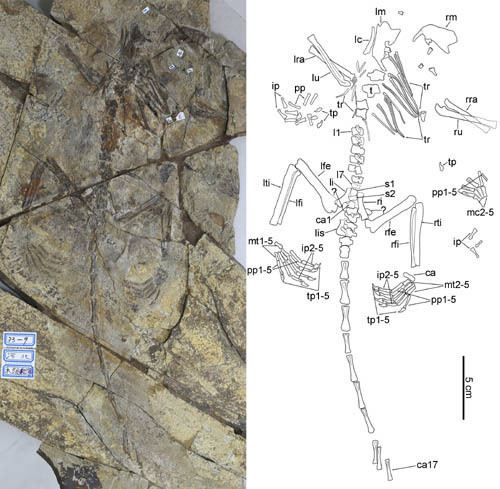Rank Order | Suborder Cynodontia Phylum Chordata | |
 | ||
Clade †HaramiyidaHahn, Sigogneau-Russell & Wouters, 1989 Similar | ||
Haramiyidans seem to be the earliest known herbivores amongst basal mammals. Their teeth, which are by far the most common remains, resemble those of the multituberculates. However, based on Haramiyavia, the jaw is less derived; and at the level of evolution of earlier basal mammals like Morganucodon and Kuehneotherium, with a groove for ear ossicles on the dentary. They are the longest lived mammalian clade of all time. However, a more recent study, in November 2015, may dispute this and suggested the Haramiyida were not mammals after all, but were part of a more ancestral side branch instead.
Contents
Relationships
Haramiyids show certain similarities to multituberculates, a group of mammals that survived until about 40 million years ago. It is possible that haramiyids are ancestral to multituberculates, although the available evidence is insufficient to be conclusive. Certain characteristics of the teeth seem to rule out a special relationship between the two groups, although some studies still unite haramiyids (or at least euharamiyids) and multituberculates in the Allotheria hypothesis.
Taxonomy
For a long time it was unknown if haramiyids were crown-group mammals, or if they should be placed in the stem-group Mammaliaformes. This uncertainty stems from the fact that haramiyid remains were mostly restricted to teeth and jaw fragments. However, new discoveries of much more complete haramiyid fossils have settled the issue—haramiyids are undoubtedly crown-group mammals. For example, the specimens show evidence of a typical mammalian middle ear, the area just inside the eardrum that turns vibrations in the air into ripples in the ear's fluids. The middle ears of mammals are unique in that they have three bones, as evidenced in the new fossils.
Order †Haramiyida Hahn, Sigogneau-Russell & Wouters 1989 [Haramiyoidea Hahn 1973 sensu McKenna & Bell 1997]
Lifestyle
Haramiyids seem to have generally been herbivorous or omnivorous, possibly the first mammalian herbivores; however, the sole haramiyid tested in a study involving Mesozoic mammal dietary habits, Haramiyavia, ranks among insectivorous species. At least some species were very good climbers and were similar to modern day squirrels; and several others have more recently been reassessed as possibly arboreal. General arboreal habits might explain their rarity in the fossil record.
Range
Most fossils have been reported from Europe, but some are known from Africa and Greenland. Since 2005, the published range extended to Mongolia and China. The age of haramiyid fossils range from Upper Triassic up to Late Cretaceous. This has important implications: the fact that haramiyids were present in the Late Triassic supports the idea that crown-group mammals originated at least 208 million years ago, much earlier than some previous research suggests.
The youngest haramiyid fossil genus is Avashishta bacharamensis from the Maastrichtian of India. Cretaceous haramiyids are previously known from the Early Cretaceous of Morocco, suggesting that these animals may have survived in gondwannan landmasses as relics. With a temporal range of at least 150 million years, they are the longest lived mammaliaform lineage.
